
By James Taylor
While there is no extant footage from the strike itself, there is plenty of material in the Film Archive’s vault from around that period and we have put a collection of clips together to give visitors to the Archive’s TV Lounge a sense of the places, people and events that were captured on film in New Zealand around 1913.
Hero image: A fundraising event held at King’s Wharf, Jervois Quay, Wellington during World War One; it also captures a wide cross-section of Wellington society, as well as an unusual mixture of bikes, cars and horse-drawn carts on the city’s streets. (1918 - F7107)

Busy Dunedin street (1912 - F8350)
Issues around work, and working conditions, were at the heart of the dispute, particularly for watersiders’ who worked at wharves around the country. The two images below, give a brief glimpse of the dangers involved in working onboard ships and on the waterfront at this time, while another film, 'The Land We Live In', shows scenes of machinery and workers inside the Glaxo factory at Bunnythorpe, in the Manawatu.
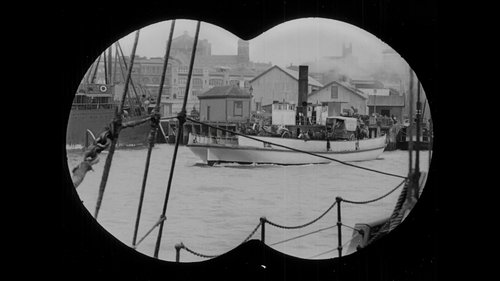
Trawling in the Hauraki Gulf (1912 - F1776)
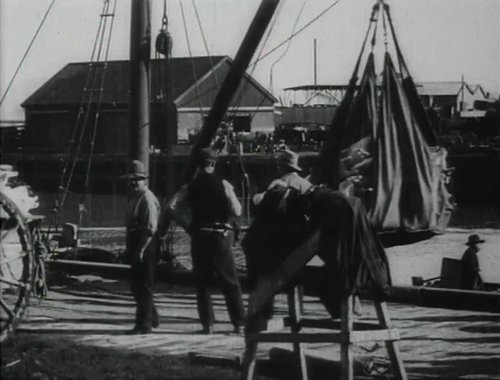
The wreck of the 'Star of Canada' (1912 - F38455)
There was also a vibrant working-class culture in New Zealand at the turn of the twentieth century. Labour Day in particular was often a time of special events such as parades, picnics and sporting events. The film 'Procession of Chinese Bakers in New Zealand', was originally credited to the strike, but it seems to have been misidentified by the Pathé newsreel in which it was shown, but it is more likely to be a trade union occasion, perhaps connected to the Unity Congress, or Labour Day, in 1913.
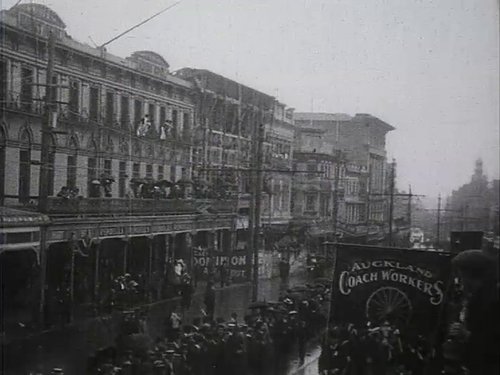
'Auckland Labour Day Parade' - a parade of workers, floats and a brass band move through the crowded and wet Auckland streets (c1910 - F10474)
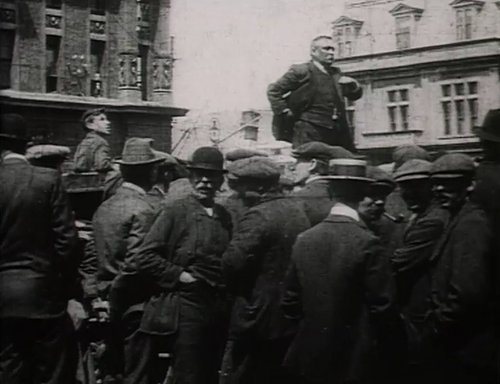
'The Elections - A Dash of Politics at Lunch' - Labour Party candidate David McLaren at Post Office Square, Wellington (1911 - F862)
Of course politics and political questions were not far from the industrial struggle of 1913; this was a period which also saw political upheaval and questions about the best way to represent the interests of working people. There are two very rare films, the first (above), shows Labour Party candidate David McLaren on the stump making an election speech at Post Office Square, outside the Wharf gates in Wellington, during the 1911 General Election. Post Office Square was the site of a number of violent clashes between specials and workers during the strike, but it was also an important place where people gathered for news and soapbox speeches. The second,'Federation of Labour', gives the briefest of glimpses of delegates walking into a Unity Congress meeting on a rainy Wellington day in 1913.
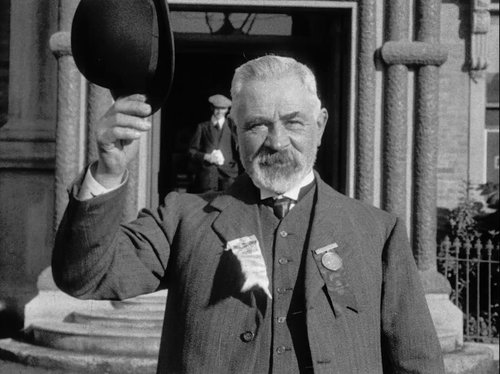
'A reunion of New Zealand's pioneer miners' - Dunedin (1912 - F202128)
There was much else going on around the country in 1913, the image above shows a gathering of some of the first miners involved in the Otago Gold rushes. Other interesting imagery is 'The Production of the Taranaki Herald and Budget', it is how newspapers, the main way people got information about the Strike, were produced. 'The Fisher Monoplane', is local newsreel footage of the successful first flight of the first monoplane designed and built in the Wairarapa. While 'Auckland's Reception to the Battleship HMS New Zealand' shows the gifted battleship entering Auckland Harbour during its tour around the country. The image below, was shot during World War I and shows two of the leading politicians during the strike: the then Prime Minister William Massey and Sir Joseph Ward, who in 1913 was the Leader of the Opposition Liberal Party. The last one to check out is the 1949 film 'Fighting Back', which shows scenes around Waihi and features the recollections of a 1912 Waihi Strike veteran.
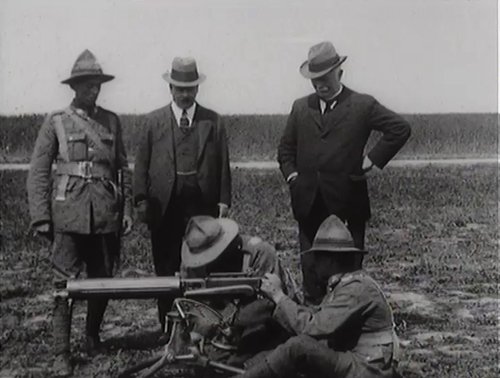
'Visit of the Hon W.F. Massey and Sir J. Ward to the Western Front' (30 June to 02 July 1918 - F1068)